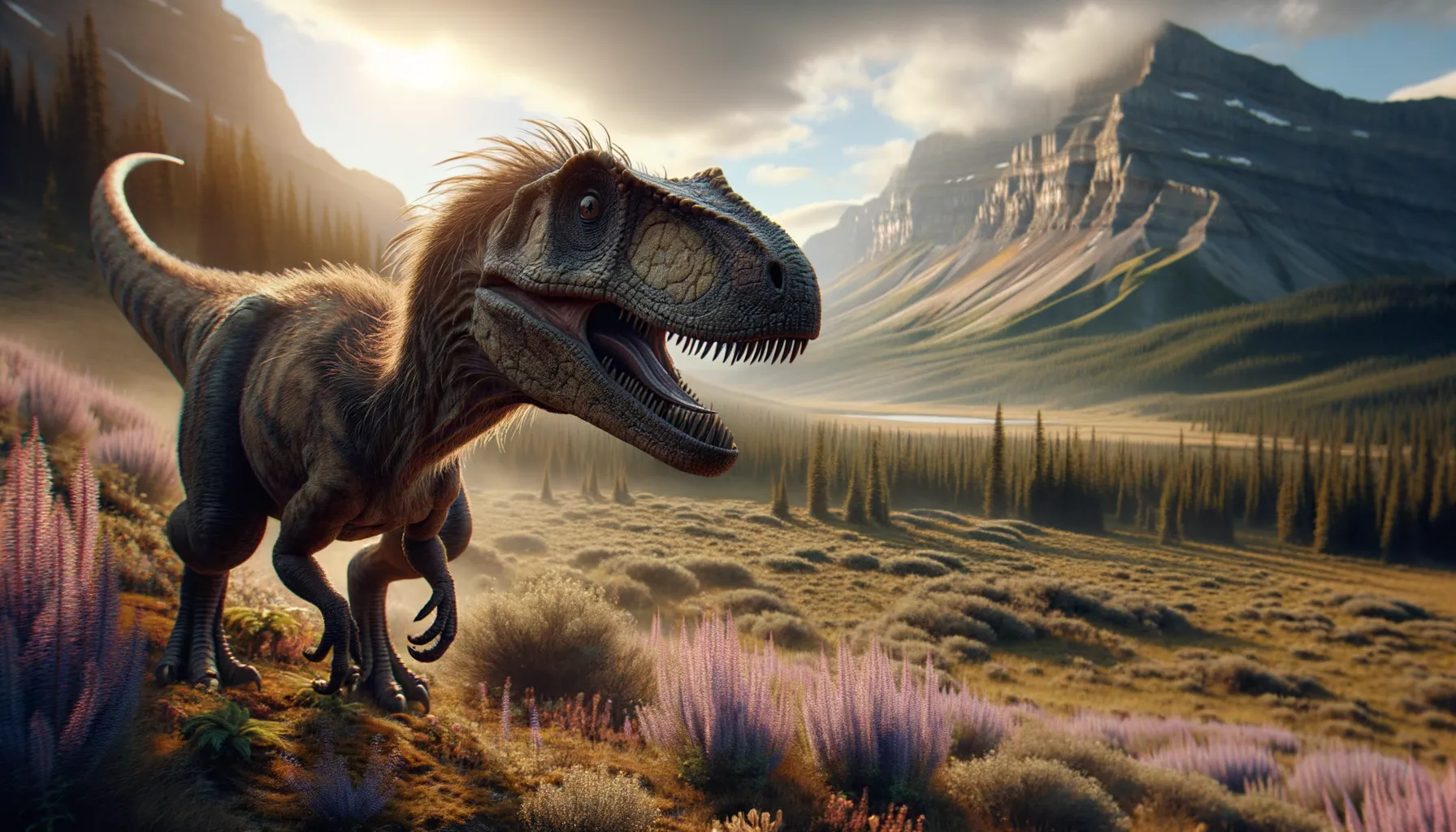
Hesperonychus
Tiny predator of the Cretaceous wilds.
Period
Cretaceous
Length
About 1 meter from head to tail.
Height
Approximately 50 centimeters.
Weight
Roughly 1.5 to 2 kilograms.
Hesperonychus was a small, fast-moving dinosaur that lived during the Cretaceous period. It was a member of the dromaeosaurid family, closely related to the velociraptors. Known for its agility and sharp teeth, it could have been a fierce predator despite its diminutive size. Discovered in modern-day Alberta, Canada, Hesperonychus was one of the smallest known carnivorous dinosaurs, offering significant insights into the diversity of prehistoric life.
Diet
Hesperonychus was a carnivore, feeding on small animals and possibly insects. Its sharp teeth suggest it was well adapted to catching and consuming prey.
Hunting
Being small and agile, Hesperonychus likely ambushed its prey using quick bursts of speed. Its size allowed it to maneuver through dense underbrush, surprising unsuspecting animals.
Environmental challenges
Living in the Cretaceous period, Hesperonychus faced a world of evolving plant life and changing climates. It had to adapt to a volatile ecosystem where larger predators also roamed. Limited food sources may have driven it to develop versatile hunting tactics. The diverse landscape would have provided both opportunities and challenges in finding prey.
Speed
Quick and nimble for its small size.
Lifespan
Estimated around 10 to 15 years.
First discovery
First discovered in Alberta, Canada, in 2009.
Fun Facts
- Hesperonychus was a tiny dinosaur about the size of a chicken, making it one of the smallest dinosaurs discovered in North America.
- It lived around 75 million years ago during the Late Cretaceous period, roaming the forests and wetlands of what is now Alberta, Canada.
- Hesperonychus is believed to have been a carnivorous dinosaur, feeding on insects and small animals.
- The name 'Hesperonychus' means 'western claw', which highlights its distinctive enlarged sickle-shaped claw on its foot.
- Despite its small size, it was a close relative of Velociraptor, sharing many features with these famous larger predators.
- Hesperonychus was discovered relatively recently, with the first fossils being formally described in 2009.
- Only partial remains have been found so far, including parts of the pelvis and hind limb, making every new fossil find exciting for paleontologists.
Growth and Development
Hesperonychus likely followed a rapid growth pattern similar to other small theropods. It probably reached maturity quickly to establish itself in its ecological niche. Juveniles may have had different dietary needs, gradually shifting to more substantial prey. Its development stages reflect an adaptation to survive among more dangerous contemporaries.
Habitat
Hesperonychus thrived in temperate regions with varied terrain, including forests and riverbanks. The presence of water bodies likely supported the small prey it fed on. Dense foliage provided cover both for stalking prey and evading larger predators. This habitat was a rich tapestry of plant and animal life during the Cretaceous.
Interaction with other species
Hesperonychus coexisted with other dinosaurs, including larger predators, requiring stealth and speed for survival. It may have scavenged from larger predator kills or competed with similarly sized carnivores. Its environment also included plenty of small mammals and reptiles, offering a wide array of food options. Cooperative behavior might have included rare instances of pack living or communal hunting.
Natural lifespan
Natural lifespan likely ranged from 10 to 15 years.
Reproduction
As with other theropods, Hesperonychus probably laid eggs, with nest sites possibly hidden within dense vegetation. Parental care is hypothesized, though direct evidence is lacking. Clutch sizes might have been small, producing offspring with precocial development traits. The environment likely influenced its breeding seasons and success rates.
Social behaviour
Hesperonychus might have had solitary habits, aligning with its hunting style. Occasional group interactions may have occurred during breeding or migrations. Territorial disputes were possible, with individuals defending their hunting grounds. It may have communicated through visual displays or vocalizations to mark territory or attract mates.
Fossil locations
Fossils of Hesperonychus have primarily been found in Alberta, Canada. These remains include significant skeletal fragments indicating its small size. The initial discovery was part of a lagerstätte, a site of exceptional preservation. Such discoveries have contributed greatly to understanding small predatory dinosaurs of North America.
